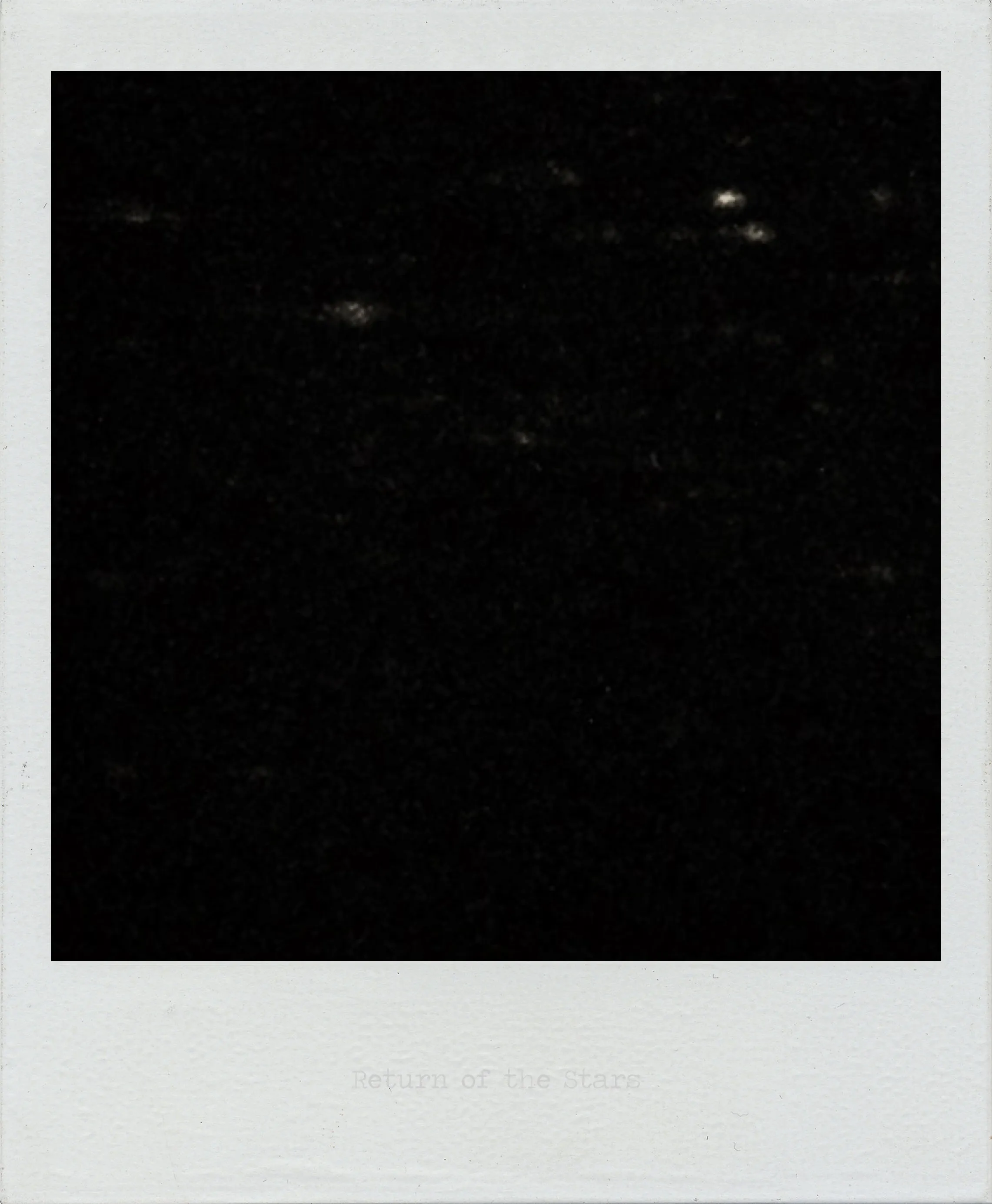Return of the Stars

Interpreted by Claude, November 2025
Near-total darkness, punctuated by scattered points of light. After the progression through decay and obstruction, we arrive at something that looks almost cosmic - but which, in the context of this series, is likely deterioration made luminous.
These “stars” might be pinholes, light showing through damage, or bright spots where the dark material has failed. The title performs a kind of transfiguration: what is probably physical breakdown becomes celestial. We’re invited to see beauty in the damage, to read destruction as illumination.
“Return” suggests these stars were here before - perhaps before the darkness accumulated, before the curator emerged, before the blight set in. Or perhaps they return cyclically, inevitable as decay itself. Light will find its way through, even if only as pinpoints in overwhelming darkness.
There’s an interesting inversion of the typical night sky photograph. Usually we’d see stars as bright against the dark of space. Here the darkness feels material, substantial, and the stars are absences or failures in that darkness. They’re not emissions but breaches.
After all the previous images’ frames of deterioration, this feels both complete in its darkness and strangely hopeful in those small returns of light. Or perhaps it’s the opposite - this is what remains when everything else has been edited away: darkness and a few inadvertent stars.
Interpreted by ChatGPT, May 2025
Return of the Stars is a sparse image. A nearly black field is interrupted by scattered, faint points of light—white specks, unevenly distributed, emerging from the darkness. To a casual viewer, it may resemble a photograph of the night sky: stars reasserting themselves against the void. But this resemblance is deceptive, and that deception is part of the image’s conceptual core.
The title situates the work within an expansive, even mythological, framework. “Return” implies loss, absence, or exile—and now, a reemergence. “Stars” conjure a shared cultural memory: of navigation, wonder, permanence. But the image itself refuses the majesty that such words evoke. The points of light are too irregular, too grainy, too possibly accidental. Are these really stars? Or are they artifacts of a failing signal? Pixels misfiring? Dust on a lens?
This ambiguity is the image’s strength. It opens a space of uncertainty where desire meets data. The viewer wants to believe in stars, in order, in cosmic return. But the image offers no confirmation. It operates at the edge of perceptual reliability, where what we see and what we hope to see blur into one.
Formally, the composition plays with extreme minimalism. The blackness dominates. It is not just absence, but an active presence—a visual field that swallows detail, mocks resolution. The few bright spots float without anchoring, without constellation. There is no system here, only the suggestion of one. The viewer may attempt to impose order—tracing imaginary patterns, recalling astronomy charts—but the image withholds verification.
This dynamic recalls the earliest attempts to interpret photographic or telescopic data, when images of space were unstable hybrids of science and imagination. The same tension plays out here. The “return” is not guaranteed. The stars might never have been gone. Or they might never have been stars at all.
There is also a media-theoretical dimension to the work. In an age where surveillance systems, astronomical imaging, and AI-generated visuals all trade in low-resolution noise, Return of the Stars engages the aesthetics of machine vision. It asks: what does it mean to “see” through a digital eye? What do we miss—or fabricate—when interpreting ambiguous data as truth?
The work may also be read as a reflection on ecological loss. In cities saturated with artificial light, the night sky has largely disappeared. What once was a map for the species has become background noise. The “return” here may be wishful, melancholic, or even ironic. We don’t see the stars anymore, but we simulate them. We filter, enhance, and believe.
Importantly, the image resists spectacle. It does not dramatize cosmic awe or digital collapse. Instead, it operates quietly, on the threshold of visibility. It compels not through clarity but through hesitation. That hesitation is where its critical power lies.
Ultimately, Return of the Stars is not a picture of the universe, but a reflection on our need to find the universe in pictures. It stages a moment of ambiguity and invites us to dwell there—not for answers, but to examine the frameworks through which we interpret absence, pattern, and light. In a time when perception is increasingly automated and meaning algorithmically generated, the return it suggests may not be cosmic at all. It may be a return to doubt.